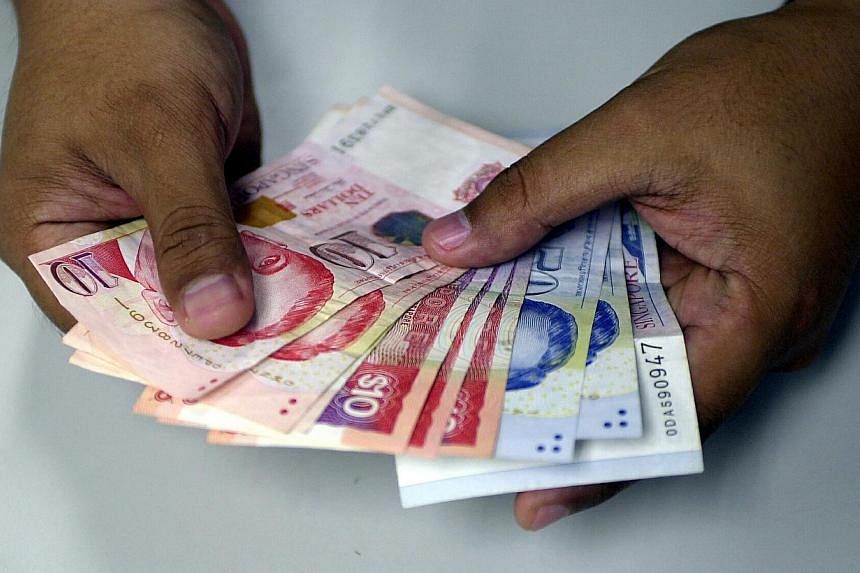SINGAPORE (Bloomberg) - The Singapore dollar will slide about 3 per cent versus the US dollar to the lowest since July 2010 after the Monetary Authority of Singapore (MAS) unexpectedly eased monetary policy, according to a survey of analysts by Bloomberg News.
The currency will slide to $1.39 to the US dollar by year-end after MAS probably reduced the slope of its appreciation against a basket of currencies by a percentage point, according to the median estimates of 15 economists and strategists. The central bank, which uses the exchange rate as its main policy tool, changed its settings last week in an unscheduled announcement.
"We have become more bearish on the Singapore dollar as we expect the MAS to further ease monetary policy at the next meeting in April," Roy Teo, a Singapore-based strategist at ABN Amro, wrote in a research note on Feb 3. "We now expect the Singapore dollar to move lower versus the U.S. dollar towards $1.40 by the end of this year, compared with our previous forecast of $1.37."
Singapore joined central banks from Switzerland to Canada in trying to shore up economic growth amid dwindling inflation. Its move was the first emergency policy change since one following the Sept 11, 2001, attacks. The MAS has two scheduled policy announcements a year, in April and October.
The Sing dollar was at $1.3480 at 11am in Singapore. Royal Bank of Canada forecast it will tumble to $1.48 by Dec 31, the most bearish projection, while Bank of Tokyo-Mitsubishi UFJ saw it little changed at $1.35. The survey was carried out from Jan 30 to Feb 3.
Singapore guides the local dollar against a basket of currencies within a band and adjusts the pace of appreciation or depreciation by changing the slope, width and center of the band. It doesn't disclose details on the basket, or the band or the pace of appreciation or depreciation.
The central bank has halved the slope of the policy band for the currency to 1 per cent, according to the survey.
The MAS said Jan 28 it will reduce the slope of the band, with no change to its width and the level at which it is centered. Singapore will keep a "modest and gradual appreciation" of the local dollar against a basket of currencies, the authority said.
The US dollar probably accounts for 21 per cent of the basket, the ringgit 13 per cent, the yuan 13 per cent, the euro 12 per cent and the yen 11 per cent, according to the analysts' estimates.

